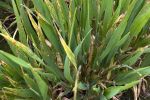A new research project aims to ensure pulse varieties meet both market and grower needs in the expanding plant-based protein market
A new $13.6 million research project aims to capitalise on the growing plant-based protein market.
With demand for these foods forecast to surpass $250 billion globally by 2035, the four-year project aims to characterise:
- protein content and quality;
- nutritional composition;
- functional attributes of different Australian pulses such as chickpeas, faba beans, field peas, lentils, lupins and mungbeans; and
- anti-nutritional attributes that could be improved.
Determining how genotype and environment influence and interact with quality attributes will also be a goal. This information will be used to guide processors, ingredient formulators, food manufacturers and technology developers to meet existing and emerging market demands.
Meeting market demand
The processing industry uses commercially available varieties; however, as domestic and international markets develop, different sources will be needed to meet demand.
GRDC Board chair and southern grain grower Sharon Starick says the research is critical.
As GRDC seeks to optimise productivity and increase the production of pulse crops as part of a profitable farming system, it is essential that Australian pulses are fit for purpose for existing and new markets.
The project is intended to help Australian pulse breeders develop varieties with quality traits that match market needs.
“This national project seeks to maintain Australia’s competitiveness and capitalise on emerging growth opportunities in value addition, and to capture value from greater levels of onshore processing that attract higher premiums for growers as well as providing market diversity,” Ms Starick says.
Collaboration
The research – to be done at the Horsham SmartFarm – is collaboratively supported, with $8.8 million from GRDC, $2.4 million from the Victorian Government and $2.4 million from industry. Thirteen subcontractors and food and ingredient manufacturers and processors, as well as an international partner, are also involved.
Australia is the world’s second-largest pulse exporter, exporting on average 2.5 million tonnes a year – more than 90 per cent of Australia’s pulses are exported as whole unprocessed grains.

























































